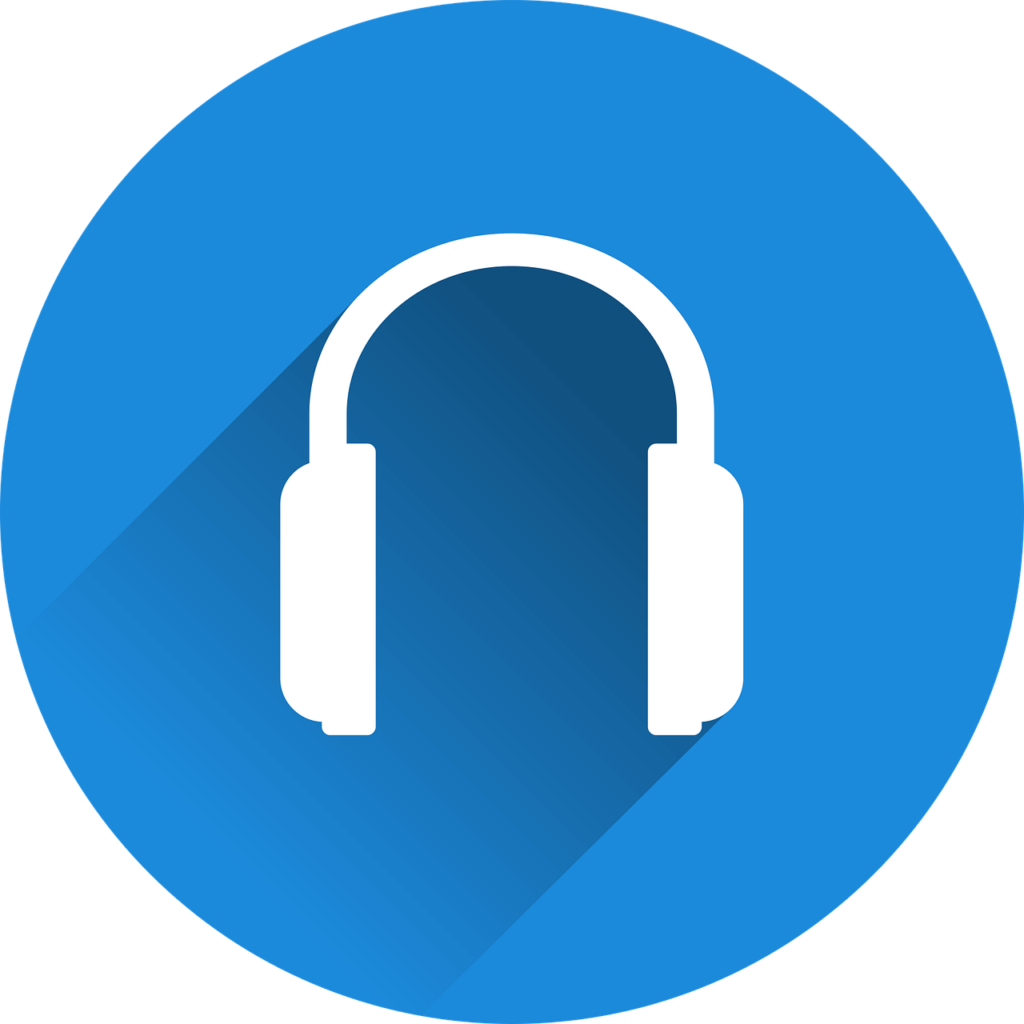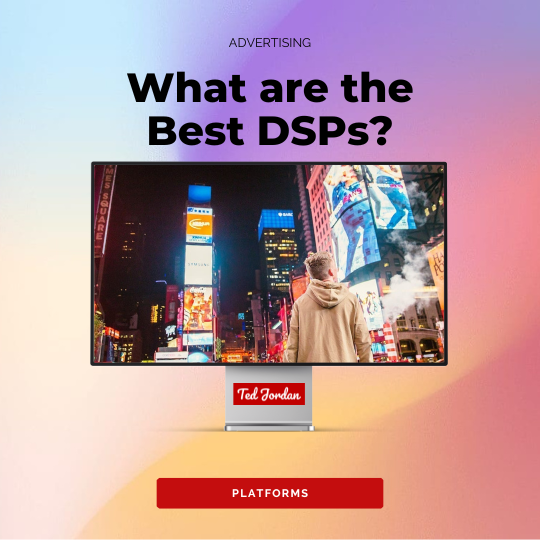With more than 2h40min spent each day listening to audio, American adults are now targeted in a non-disruptive and effective way by advertisers: Programmatic audio ads.
When you know the US is the top country for podcast listeners, the opportunity to advertise through Programmatic audio is too good to be missed. That’s why the US is the most advanced market for audio advertising at the moment.
Discover what Programmatic audio is and how it works, why it’s an efficient way to reach new audiences and its advantages.

What is Programmatic audio?
With Programmatic audio, audio ad placements are bought in real time through platforms such as DSPs or SSPs. Audio ads are then broadcast through streaming audio platforms (Pandora, Spotify), live-streams (radio stations), downloaded audio media (podcasts, albums) or on-demand audio contents (podcasts, talk shows, radios).
Audio ads are mainly broadcast on mobile phones, but know they can be played on all devices: desktops, mobiles, tablets, CTVs, smart speakers or voice assistants. On average, an audio ad lasts 15, 30 or 60 seconds.
Programmatic audio allows advertisers to reach their most valuable audience at the best time of the day or of the week. This is possible thanks to precise targeting options, RTB and real-time adjustments. The advertising experience is quite intimate because the majority of audio listeners wear headphones when listening to audio content.
And if they don’t, they are probably doing another activity while listening to audio content. They are still focusing on the content, even when ads are broadcast. Audio listeners tend to not skip ads when doing an activity, which is one of the benefits of Programmatic audio.
Audio ads are sold on a CPM basis or through PG (Programmatic Guaranteed). The average CPM for Programmatic audio ads is between $5-30.
For information, the average CPM for audio ads on Pandora, in the US, is situated between $8-12 while on Spotify it’s between $5-30. Compared to other Programmatic ad formats, audio ads are quite inexpensive and worth a try.
“62% of listeners take action—like searching for a product, purchasing the product, or simply talking about it—after hearing an ad during a podcast.”
Source: Spotify
Top audio partners working with Programmatic platforms are:
- Spotify (the biggest music platform globally, with 626M users).
- Pandora (about 50M active users).
- The Orchard (library of over 2M songs, owned by Sony Music).
- iHeartMedia (the largest traditional and digital radio in the US).
- SoundCloud (streaming service platform with over 140M monthly users).
- Amazon Music (over 55M subscribers).
- Audible (online audiobook and podcast service).
- Deezer (French music streaming platform).
- YouTube Music (music and podcasts platform created by Google).
Some of the biggest audio publishers have a minimum spend threshold for advertisers to buy audio ad placements. Asking a Digital Media expert, like Ted Jordan, for advice is recommended.
For example, StackAdapt or Hawk could be a good fit for advertisers to buy audio ads via DSPs. TTD or DV360 are other DSP options for brands to purchase Programmatic audio ads.
Programmatic audio ads can also be bought through SSPs such as DAX Audio, which is specialised in audio ads for mobile apps and websites. DAX is the largest independent SSP in the US at the moment.
Types of Programmatic audio ads
Programmatic audio allows advertisers to purchase different audio ad formats in order to deliver their promotional messages and raise brand awareness.
The main audio ad formats available through Programmatic are:
- Audio Pre-Roll (before an audio segment).
- Audio Mid-Roll (during a break between two segments or two songs).
- Audio Post-Roll (after an audio segment).
- Rewarded ads (in-game advertising when users have to listen to an audio ad to gain a bonus upon completion).
In Programmatic, audio ads are typically voiceovers.
One of the best features of audio advertising is that advertisers can join a visual banner with their voiceover commercials. This companion banner is not always available but when they are, they tend to increase engagement and brand recall.

Programmatic targeting options
Thanks to Programmatic, audio advertising benefits from many precise targeting options:
- Geofencing (where people live or when they go).
- Contextual targeting.
- 3rd party data.
- Retargeting.
- Interests.
- Demographic (age, gender).
- IP-based targeting.
Programmatic targeting options play a crucial role in campaigns efficiency and success.
Direct Access
Benefits of Programmatic audio
Programmatic audio presents various benefits for advertisers: targeting capabilities, high engagement, attractive CPM rates, versatility, real-time optimisation, advanced analytics, etc.
Programmatic audio is one of the best non-disruptive forms of advertising: listeners are focused on what they are listening to and are inclined to take action after hearing ads on podcasts or between songs. Numbers don’t lie: 62% of listeners take action […] after hearing an ad during a podcast.
When they do something else while listening to audio content, people tend to continue their activity: they don’t take the time to skip ads. The audio format is a great way to grab users’ attention.
Because millennials and gen-z are those who consume audio content the most, brands can build a long-term relationship with their audience. Who does not remember at least one radio ad from their 20s?
To increase the success rate of global digital campaigns, advertisers use an omnichannel strategy: they run audio ads alongside other Programmatic ad formats.
Know that Programmatic audio ads are often broadcasted through free subscription services but paid subscribers also listen to ad-supported audio content. And, most importantly, audio ads are usually no visible to ad blockers!
“81% of monthly streaming audio listeners in the US with paid streaming audio subscriptions reported they also listen to ad-supported streaming audio content at least monthly.”
Source: Edison research
Buying ads programmatically means you save time when buying an ad placement. It’s also a synonym of advanced analytics tools (to know how many users listened to an audio ad, for example) and real-time optimisation and performance measurement.
Advertisers are able to track ad exposure, engagement levels, demographics, users’ data or conversions in real time. For example, they can add a custom URL when using a companion banner with audio ads to know how many people click their link.
Conversions may also be tracked with promo codes (one for each podcast episode or for each streaming platform), cookieless solutions or surveys (how did you hear about us?, for example).
Targeting capabilities means brands can adapt their audio message to each audience they target and perform A/B tests to find out which ad performs the best. All this while enjoying low CPM costs.
To avoid ad fatigue or to prevent listeners to get annoyed by your ad after hearing it several times, frequency capping should be set before launching any audio campaign.
9 best practices for audio advertising
If you want to run successful Programmatic audio ad campaigns, follow these best practices:
- Know your audience.
- A/B test your ads.
- Keep your audio ad short.
- Choose the right voice and tone.
- Use storytelling techniques and emotional appeal.
- Use sound design accordingly.
- Have a clear CTA.
- Follow Programmatic audio specs.
- Use a companion banner.

Know your audience: do they use music streaming platforms? What kind of podcasts do they like? Does your audience own a home assistance device like Alexa? Gather as much information as possible about your audience to be able to retarget them and increase your sales.
A/B test your ads: create personalised Programmatic audio ads for each audience. Use DCO (Dynamic Creative Optimisation) to tailor your ads in real time based on data (time of the day, location, device type, weather).
Keep your audio ad short: studies show that shorter audio clips have higher recall so keep your Programmatic audio ads short.
Choose the right voice and tone: choose the right voice, the one that will connect with your audience. And don’t speak too quickly: for 15s ads, use between 40 and 50 words; for 30-second-audio ads, publishers recommend 55-90 words.
Avoid sped-up disclaimers at the end of your ads, such as legal ones, as ads do not perform as well as the ones without.
Storytelling techniques and emotional appeal: tell a story through your ad, create a bond with your audience, tell them how your product or service can help them, using simple words. Don’t forget to repeat your brand name 2-3 times.
Use sound design accordingly: sound design and sound levels are really important in audio advertising. Use sound design only if it complements your message. If you choose music for your audio ad, pick something similar to what your audience listens to. For sound design, incorporate a recognisable brand sound if you have one (think Netflix and its iconic “ta-dum” intro sound).
Have a clear CTA: don’t overthink your CTA, make it clear for your audience to avoid confusion. It’s a great idea to add this CTA on your audio companion banner if you use one.
Follow Programmatic audio specs: each platform is different but most publishers accept IAB VAST specs. VAST is not only for video ads, it’s also for digital audio ads since VAST 4.1 exists. In the past, IAB created DAAST (Digital Audio Ad Serving Template) but this format has been depreciated.
Use a companion banner: if possible, use a display companion ad banner mentioning your CTA and your brand. This will increase engagement and will help with conversion tracking.
Programmatic audio in 2025
For 2025, experts predict that digital audio will represent $7.55B, or 42% of audio revenue. This should continue to grow every year and represent about 49% of audio revenue in 2028. (Source: emarketer)
Programmatic audio allows brands to create dynamic and custom audio ads for their audience while enjoying all the benefits of Programmatic in general. With AI-generated voices or advanced technologies such as 3D sound effect, brands will be able to test and create better audio ads in 2025. All this while availing of relatively low CPMs.
It is estimated that the number of listeners in the Digital Audio Advertising market will reach 1.6B users by 2029, with over 110M listeners of podcasts just in the US. Mobile should stay the favourite device to listen to audio content in the future. 78% of total ad spending is expected to come from mobiles in 2029 within the Digital Audio Advertising market.




